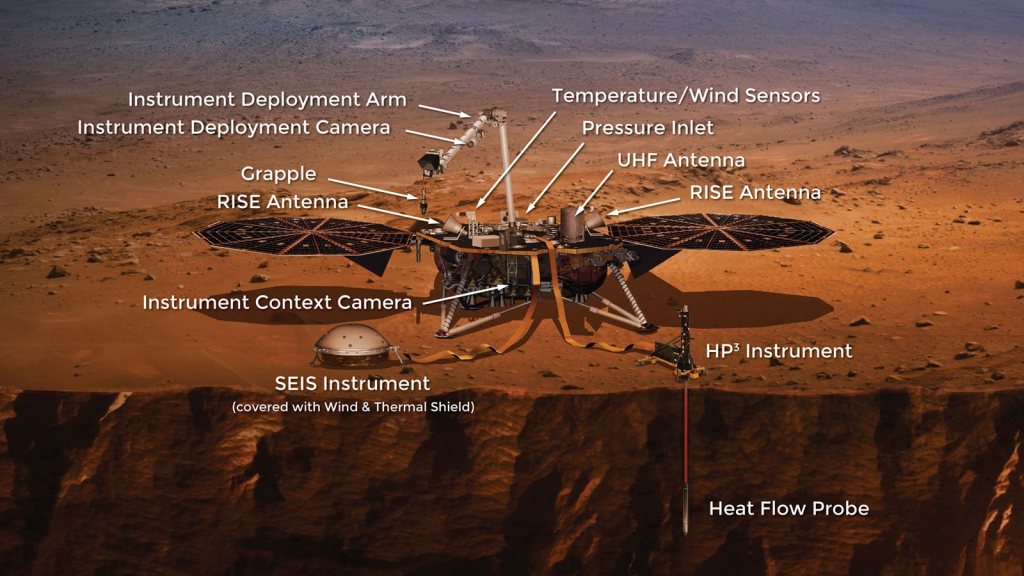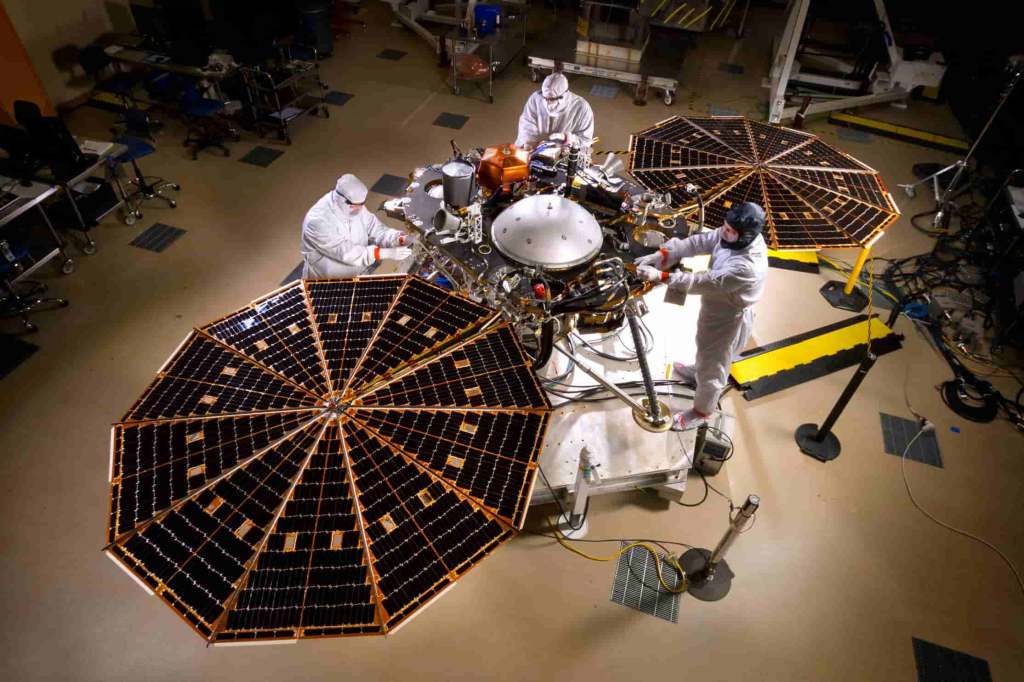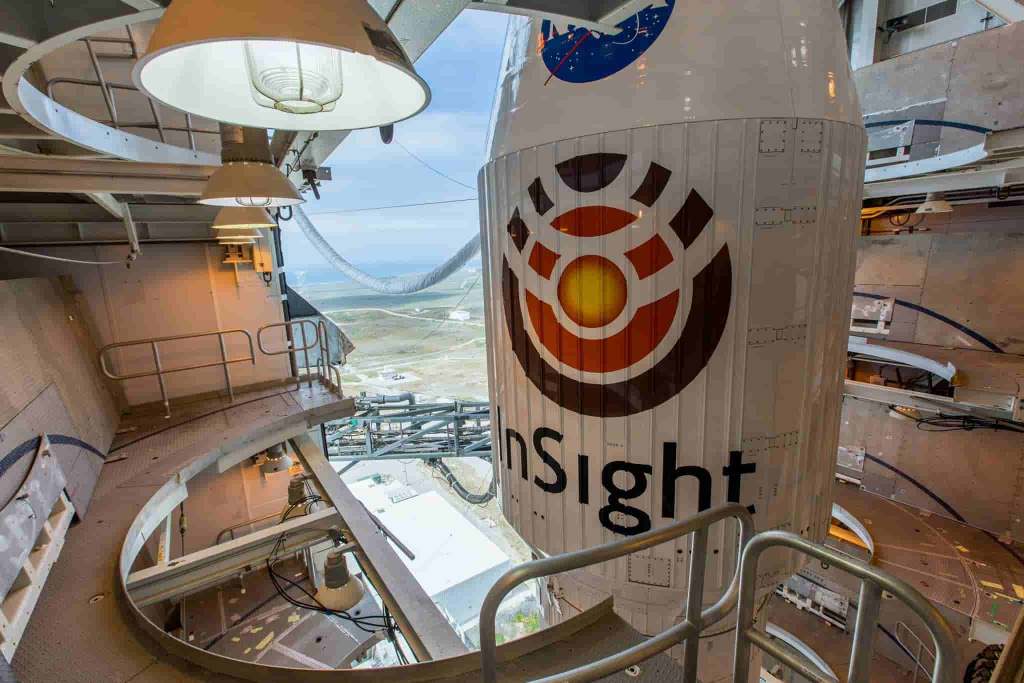
On December 21, NASA reported that the Mars lander InSight (Interior Exploration using Seismic Investigations, Geodesy and Heat Transport) missed replying to its second call from the Mars Reconnaissance Orbiter, likely as a result of the power waning. This led to NASA officially concluding its four-year mission on Mars. There are several elements that led to the lander’s loss of power, leading many to question how the vehicle could have been saved. Followers of the mission have common questions about how the vehicle could’ve been saved. They also ask about the fate of Mars’ other remaining operational vehicles.
InSight lander and its goals
The Insight lander stands out from NASA’s previous other sent to Mars. Unlike Spirit, Opportunity, Curiosity, Perseverance, or even the Martian helicopter Ingenuity, this spacecraft wasn’t mobile. Since landing in November 2018, it has operated in one spot. InSights’ focus was to study and investigate Mars’ interior structure and geological activity. The study of Mars’ geography is known as areography. InSight was sent with many scientific instruments, some of the most notable being the Heat Flow Probe, a seismometer, and the RISE experiment, which used radio waves emitted from the spacecraft to understand Mars’ movement.



Throughout the last four years on the Martian surface, dust and sand has built up on the craft’s solar panels. The power generated has gradually decreased with time, to the point today where it is unable to communicate at all.
What Insight taught us
InSight has lived up to its name and has shed an immense amount of- well, insight, into the planet’s structure. The seismometer helped to record the vibration from martian winds within human hearing range, allowing us the first time to hear the winds of Mars. In April 2019, the seismometer detected the first marsquake. The origin of the vibration was narrowed down to be inside the planet itself. In 2021, InSight recorded vibration. Later investigation discovered the vibration came from an impact from a meteoroid, the largest NASA had found on Mars. The impact also revealed water ice that was present below the surface. This was the closest NASA had seen water ice to Mars’ equator, a significant finding as it could be utilized for future human spaceflight for drinking water. It could also be used to water future crops grown on the planet and broken down for rocket fuel.
Why couldn’t we save InSight?
Many people have questioned why NASA did implement an airbrush into Insight that could have cleaned off the solar panels. The answer is two-fold: first, NASA saw no need for such a mechanism. The lander was only intended to operate for 709 Sols (Martian days); currently, it’s at 1444 Sols – more than double what it was intended to reach, so every day NASA has received was a bonus, not a loss. Another significant component of the issue is Mars’ dust itself. Having spent eons baking in solar radiation, it has become electrostatically charged, and like an annoying piece of thin plastic, it sticks to everything – including solar panels. A brush would only scrape the charged dust particles around.

How long do the other Mars spacecraft have before they die?
Now that InSight has missed its second consecutive communication request, NASA has shifted operations to listening closely through the Deep Space Network, in the event InSight finally calls home. However, this missed communications session has marked the end of InSight’s four-year mission.
With InSight departed, the remaining American spacecraft operating on Mars include the Curiosity rover and its twin sister, the Perseverance Rover, along with its drone, Ingenuity. Of the three vehicles, Ingenuity will likely be the first vehicle lost. The tiny drone, designed as a technology demonstrator with a planned operational life of 30 days totaling five flights, has now lasted more than 630 days. JPL teams continue to push the tiny drone’s limits with every flight. As of December 17, the vehicle has completed 37 flights. Despite its success, the vehicle will eventually either succumb to the extreme Martian winters or the solar panel’s efficiency will slowly degrade over time to the point it can no longer generate enough power to charge up the batteries for flight.
The next vehicle that NASA will likely have to say goodbye to is Curiosity. Two major factors could contribute to Curiosity’s demise: wheel damage and power. Over the course of Curiosity’s ten-year lifespan and 17.5 miles traveled, its tires have taken quite a lot of abuse with puncture holes and other damage. It’s worth noting that JPL has experience operating a rover on Mars with a fully dead wheel, far worse than the punctured ones we see on Curiosity. In March of 2006, the Spirit rover (twin sister of the Opportunity rover) had its wheel completely stop working. As such, JPL proceeded forward, or more accurately, backward, dragging the dead wheel behind the rover. As for Curiosity, even if it were to become stuck; it could operate like InSight and become a stationary research outpost until we get to the problem that both Curiosity and Perseverance will eventually face: Power.
Despite being free of the limitations of solar panels, the vehicles are still limited to their nuclear reactors. These rovers used reactors called radioisotope thermoelectric generators, or RTGs, which slowly reduces over time. With Curiosity, the shortest predicted lifespan of its RTG is 14 years, or to 2026 – though it could certainly last longer. The 2020 launched Perseverance rover with a similar RTG would have its RTG’s minimum lifespan end in 2034. Assuming realistic values, Curiosity will likely cease operation due to power loss before 2040. Perseverance will also likely succumb to power loss before 2055.
FTC: We use income earning auto affiliate links. More.




Comments